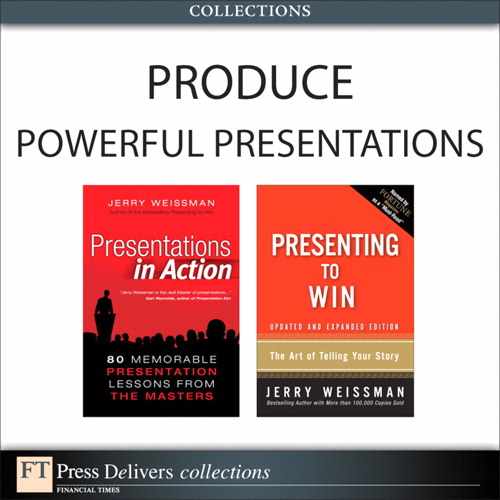11. How Long Is Too Long?: When in Doubt, Leave it Out
In 1988, Bill Clinton, then the governor of Arkansas, gave a nominating speech for Michael Dukakis at the Democratic National Convention. By convention rules, Mr. Clinton was allowed 15 minutes, but he brought an 18-page speech. According to the New York TimesF11.1, he read almost every word, rambling on for so long that the delegates began to chant, “We want Mike!” Ignoring their chants, Mr. Clinton went on and on and on. When, after 30 minutes, he finally said, “In conclusion ...” the crowd roared their approval.
Years later, in his autobiography, Mr. Clinton admitted, “It was 32 minutes of total disaster.”F11.2
For his first venture onto the national political stage, Bill Clinton neglected to take a lesson in brevity from other national leaders’ speeches:
• Abraham Lincoln’s Gettysburg Address: 272 words
• Abraham Lincoln’s second inaugural address: 700 words
• Winston Churchill’s “blood, toil, tears, and sweat” speech that launched Britain’s entry into World War II: 627 words
• John F. Kennedy’s inaugural address: 13.5 minutes
Barack Obama, Mr. Clinton’s Democratic successor, learned well from his predecessors. His now-famous speech at the 2004 Democratic National Convention ran 16.5 minutes, and his own now-historic 2009 inaugural address ran 18.5 minutes.
Bill Clinton ultimately learned his lesson. As president, he became a charismatic speaker, able to captivate any audience. After he left office, he leveraged that skill on the speaking circuit, with fees for his keynotes earning him eight figures annually.
The best business example of the value of brevity comes from that most mission-critical of all presentations—the IPO road show. I have had the privilege to work with many companies developing their road shows. When a company offers shares of its stock to the public, the CEO and the CFO go on an arduous two-week tour, delivering 70 or 80 iterations of the same presentation. Inevitably, as the tour proceeds, each iteration of the presentation gets longer and longer in a phenomenon known as “presentation creep.” Targeted at 20–25 minutes, by the end of the road show, some presentations have been known to run as long as 40 minutes. Except for one company.
Let’s call them XYZ. During XYZ’s road show, I received an excited call from an investment banker friend in New York who had just attended the luncheon presentation. He said, “This was the best road show you’ve ever coached!”
“Why?” I asked.
“Because they did it in 15 minutes, and the investors were delighted to get back to their offices.”
It is doubtful that you will face the same challenges and stakes in your presentations as national leaders and IPO road show executives, but you can learn from the masters. Your audience doesn’t need to hear every encyclopedic detail of your business proposal. They have neither the time nor the patience—especially in this Twitter-driven world—to listen to long presentations.
Keep brevity in mind while you are developing your presentations, and when you are finished and ready to present, take one more look at it and find more material you can omit. Follow Ludwig Mies van der Rohe’s famous advice Less Is More, and its corollary: “When in doubt, leave it out.”
